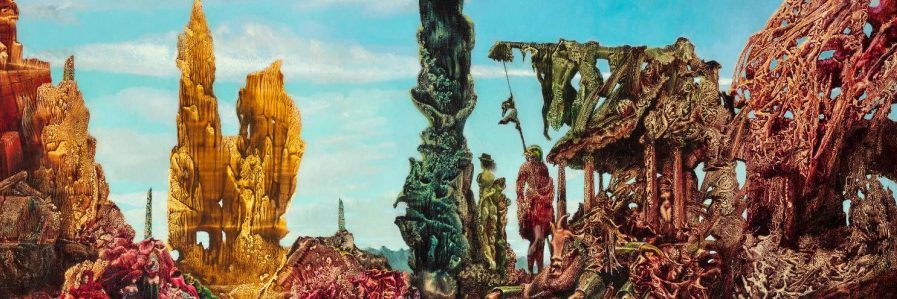Cognitive poetics is one of the most exciting literary-theoretic subfields I’ve stumbled upon. So far as I can tell, Peter Stockwell, whose paper on resonance I’ve cited previously, is one of cognitive poetics’ primary authorities, and has written an introduction to the discipline (Cognitive Poetics: An Introduction, 2002).
Stockwell summarizes “schema theory,” a composite of different theorists’ attempts to better grasp how readers bring interpretive contexts and frameworks to texts during a literary encounter. We can understand “schemas” loosely in the way Piaget, Kant, and Schmidhuber have all used it:¹ a mental framework and interpretive system into which new ideas are tested and assimilated. Synonyms for schema include framework, worldview, way of seeing, interpretive filter, and mental model.
Psychological and perceptual theories of the schema function as a less-quantified analog to cognitive-scientific theories of predictive coding, which operate off the central premise that the brain not just passively undergoes experiences or perceptual events but in fact actively anticipates them, making a predictive inference (i.e. deduction) based on patterns (i.e. regularities) discovered within previously inducted knowledge. That is, the brain interprets the world by interfacing top-down models of the world with bottom-up sensory data, and uses these top-down models to further anticipate or predict future events and states.
In analyzing the information content of discourses (from the everyday to the literary), Stockwell cites Robert-Alaine de Beaugrande, who in 1980’s Text, Discourse, and Process carves categories of discursive information into first, second, and third orders. First-order information has low novelty, and is therefore merely schema-preserving. Second-order information is more “unusual” and helps “develop schematic knowledge by accretion.” Third-order information, finally, appears “highly unlikely” or unusual with respect to the reader’s status quo schema, and can represent such a disruption to said schema as to lead to its restructuring. For example, we might have a schema partway through a novel for what kind of person a literary character is, a schema that may require restructuring if we come upon surprising new information about that character’s actions or motivations later in the book.
These “orders” of informativity are well-informed by predictive-processing models, such as Karl Friston’s free energy model. Briefly, Friston believes that much of the brain’s function can be described in terms of aligning models or expectations of the world with reality. One of the brain’s primary motivations is the reduction of free energy, which in simplified terms can be thought of as predictive error, the disparity between one’s status quo modeling of the world and what is actually the case. When the brain encounters high levels of “surprisal” in the world (i.e. encountering data points that fall far outside its existing probability distribution of what should be the case) it may need to restructure said distribution models in favor of a new distribution that better explains the surprising data points. The overlap between Friston’s and de Beaugrande’s theories, then, is clear, and we can understand Beaugrande’s “informativity,” in terms of predictive coding:
- first-order information is low novelty and low surprise, resulting in the preservation of existing probability distributions
- second-order information is high novelty but low surprise, helping accrete and fill out existing schematic knowledge but stopping short of significantly altering any high-level probability models
- third-order information is high novelty and high surprise, causing higher-level restructuring or significant tuning of the reader’s models
In “On the Erotics of Interpretation” I illustrated how one higher-level function of art is challenging predictive models of what comes next (either formally or narratively). We walk into all artworks with some predictive expectation based on genre, tradition, author, cover art, synopses, reviews, social information, etc. These expectations stem from a sort of archetypal or composite model-amalgam pulling from previous experiences. Successful artworks continually subvert and update these expectations, often repeatedly over the course of an art or literary encounter, or else risk feeling predictable, generic, or redundant to the viewer-reader.
This view of art aligns with the thesis outlined in “Predictive Processing and Art as Cognitive Remodeling,” namely that art causes us to fall into predictive traps, inferences about the artwork or the world of the artwork that are actively subverted in the art-encounter. Within the framework cognitive poetics, art is schema-disrupting, and much of its value to readers comes from supplying information of the third order.

Leave a comment